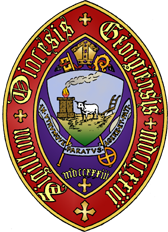The largest sale of enslaved persons in American history took place in 1859 to satisfy the gambling debts of a significant lay person in the Diocese of Georgia. Known as The Weeping Time, the auction took place on the Ten Broeck Race Course near Savannah on March 2 and 3. Auctioneers sold off 436 men, women, children, and infants during the two-day event.
 The Butler Family owned significant property on St. Simons Island and rice growing land on and around Butler Island, south of Darien. Major Pierce Butler (1744-1822) accumulated great wealth that, as he was estranged from his son, went to two grandsons on his death—Pierce and John. The younger Pierce speculated in business experiencing dramatic losses in the Panic of 1857. Compounding these losses were gambling debts. Butler had to transfer his estate to Trustees for a sale to cover $700,000 in debt. This is calculated at more than $22.8 million of losses in today’s dollars. The Trustees sold his Philadelphia Mansion for $30,000. Even with other real estate, they could not satisfy creditors. His greatest wealth was invested in what was considered “human capital.”
The Butler Family owned significant property on St. Simons Island and rice growing land on and around Butler Island, south of Darien. Major Pierce Butler (1744-1822) accumulated great wealth that, as he was estranged from his son, went to two grandsons on his death—Pierce and John. The younger Pierce speculated in business experiencing dramatic losses in the Panic of 1857. Compounding these losses were gambling debts. Butler had to transfer his estate to Trustees for a sale to cover $700,000 in debt. This is calculated at more than $22.8 million of losses in today’s dollars. The Trustees sold his Philadelphia Mansion for $30,000. Even with other real estate, they could not satisfy creditors. His greatest wealth was invested in what was considered “human capital.”
Ads in two of Savannah’s newspapers said, “For Sale, Long Cotton and Rice Negros! A gang of 440, Accustomed to the culture of Rice and Provisions, among them are good mechanics and house servants.” The advertisement did note that families would not be divided in the sale. Buyers came to the track during the four days leading up to the sale to inspect the enslaved workers. They came not just from Georgia and neighboring South Carolina, but as far away as Virginia and Louisiana for the promise of a deal. The first day of the auction brought heavy rain that kept some buyers away. The rain mingled with the tears of those sold gave the event its name, The Weeping Time.
Mortimer Thomson covered the auction for the New York Tribune writing, “On the faces of all was an expression of heavy grief; some appeared to be resigned to the hard stroke of Fortune that had torn them from their homes, and were sadly trying to make the best of it; some sat brooding moodily over their sorrows, their chins resting on their hands, their eyes staring vacantly, and their bodies rocking to and fro, with a restless motion that was never stilled….”
 The Trustees netted $303,850 in the auction. A mother and her five grown children brought the highest bid, $6,180 with most people selling for prices from $250 to $1,750. Though the tragedy of this sale disturbs us, sentiment at the time favored Butler as one Philadelphia friend, Sidney George Fisher, entered into his diary, “It is highly honorable to [Butler] that he did all he could to prevent the sale, offering to make any personal sacrifice to avoid it.”
The Trustees netted $303,850 in the auction. A mother and her five grown children brought the highest bid, $6,180 with most people selling for prices from $250 to $1,750. Though the tragedy of this sale disturbs us, sentiment at the time favored Butler as one Philadelphia friend, Sidney George Fisher, entered into his diary, “It is highly honorable to [Butler] that he did all he could to prevent the sale, offering to make any personal sacrifice to avoid it.”
Among the 20 enslaved workers kept from sale by Butler were James and Daphne Alexander and their children. The couple’s youngest child, born about six years after the auction, was Anna Ellison Butler Alexander. She is recognized as a saint by the Episcopal Church.
Pictured above: Auction of enslaved persons (above), historical marker for Georgia’s largest auction site (below).
